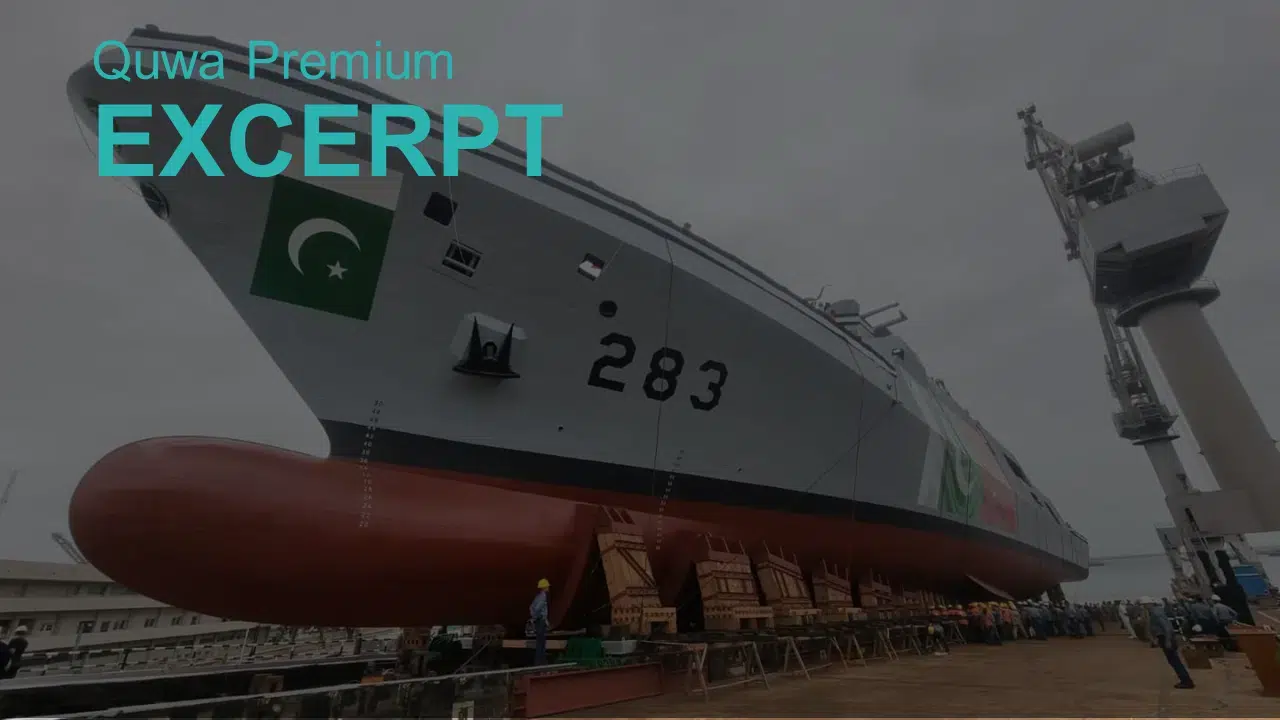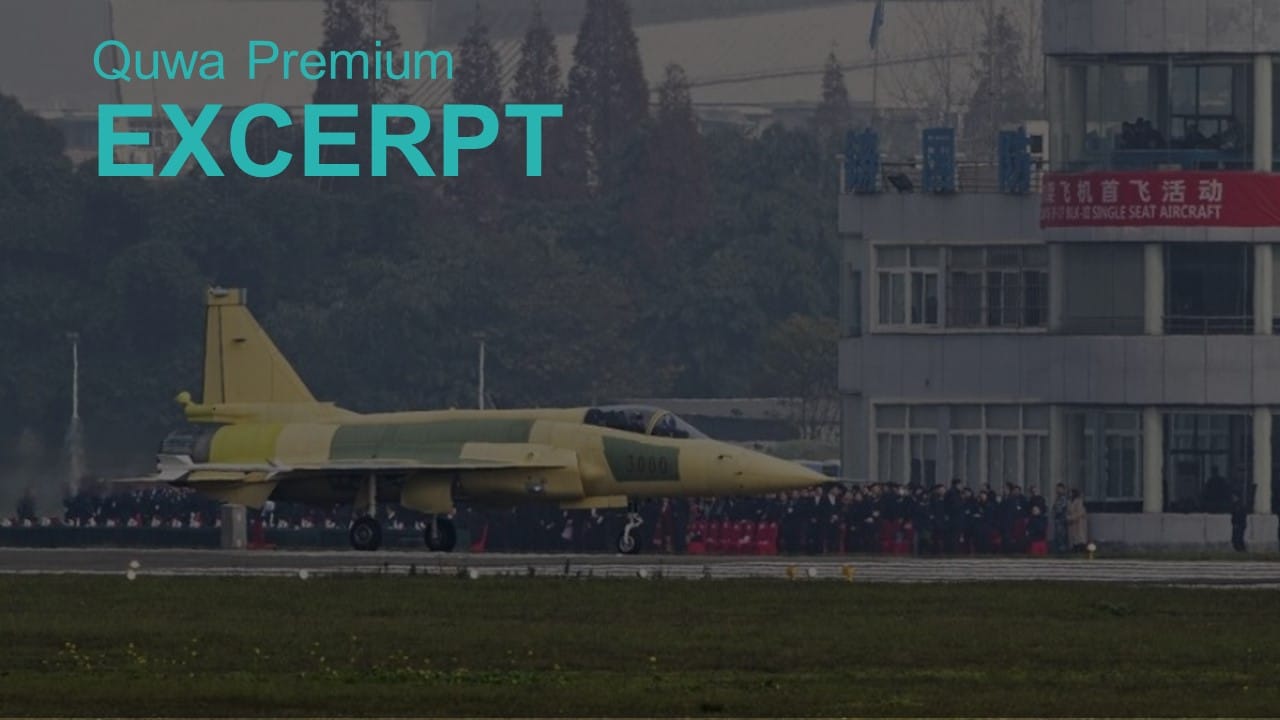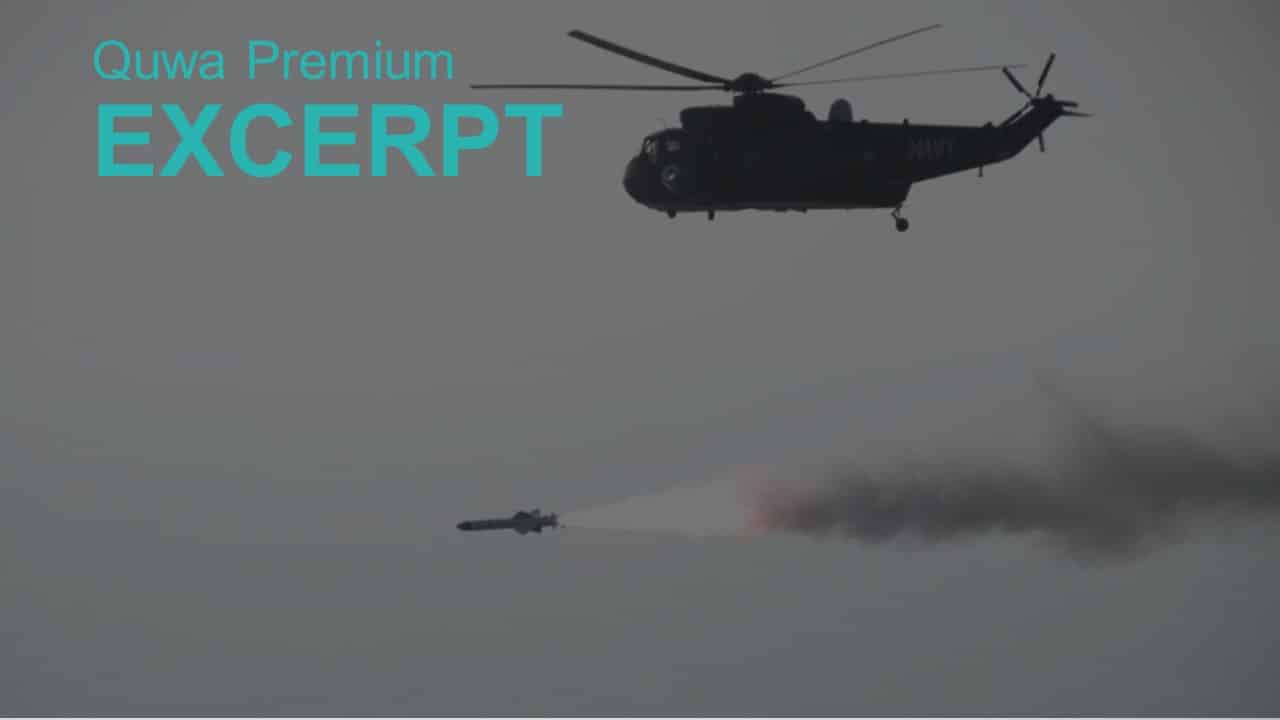2965Views

Pakistan Launches 4th MILGEM Corvette (PNS Tariq – 283)
Karachi Shipyard & Engineering Works (KSEW) launched the Pakistan Navy’s (PN) fourth MILGEM Babur-class corvette, PNS Tariq (283), on August 2, 2023. PNS Tariq is the last of the four MILGEM corvettes the PN ordered from Türkiye ’s ASFAT (Askeri Fabrika ve Tersane İşletme) in 2018. Under the $1.5 billion US deal, the PN was to receive four customized MILGEM corvettes as well as ASFAT’s support in designing an original frigate for the PN (i.e., the Jinnah-class frigate program). The first corvette is scheduled for delivery in 2023, and the final ship by 2025. Currently, all four ships are undergoing sea trials.
The Babur-class corvette is a customized variant of the Ada-class anti-submarine warfare (ASW) corvette; based on the same MILGEM platform, the Babur-class corvette is different in a number of ways. First, it is larger with a displacement of 2,888 to 2,988 tons (compared to the Ada-class’ 2,400 tons). It also carries numerous design changes that affect or improve its capabilities in key areas.
The most obvious, and potentially the most significant, is the inclusion of vertical launch system (VLS) cells for anti-air warfare (AAW). Currently, the Babur-class is equipped with 12 VLS cells (i.e., GWS-26), which will be paired with the MBDA Albatros NG (Common Anti-Air Modular Missile Extended Range or CAMM-ER) surface-to-air missile (SAM) system. The CAMM-ER offers a stated range of over 45 km alongside multi-launch or simultaneous target engagement capabilities. Its guidance system comprises of a two-way data-link system that communicates with the surveillance/targeting radar and an active-radar-homing terminal-stage seeker. Once inducted, the CAMM-ER will be the PN’s most sophisticated SAM system and, in turn, the Babur-class corvette will be its most capable AAW vessel in the fleet.
In terms of anti-surface warfare (ASuW), the Babur-class is configured to carry a yet-to-be-disclosed anti-ship missile in a two-by-three-cell configuration. It could either be the domestically produced Harbah anti-ship cruising missile (ASCM), or, potentially, the forthcoming P282. One of the advantages of sourcing an in-house missile is that the PN is not limited to supplier-imposed range restrictions (resulting from MTCR-compliance). Thus, the Babur-class’ anti-ship/surface capabilities could exceed a range of 300 km.
For point-defence purposes, the PN opted to use the Aselsan Gökdeniz close-in-weapon-system (CIWS) in place of the Rolling Airframe Missile (RAM). Interestingly, even when the PN could have acquired a RAM-type solution (e.g., from China), it opted for CIWS instead, indicating that the service prefers CIWS guns instead of point-defence missile systems (PDMS), at least currently.
Otherwise, the Babur-class and Ada-class are similar, using comparable radar and other sensors, electronic support measures (ESM) systems, and other inputs (sourced from the same suppliers, notably Aselsan and Havelsan, among others). Likewise, both ships rely on a combined gas-and-diesel (COGAD) layout for their respective propulsion needs (with General Electric supplying gas turbines for both ships).
With production of the Babur-class corvette concluding, the PN – alongside KSEW, Maritime Technologies Complex (MTC), and the Naval Research and Development Institute (NRDI) – will move towards the Jinnah-class frigate (JCF). The JCF will be Pakistan’s flagship naval project for the next several years as it works to build the country’s capacity to design, configure, and build an original warship.
The JCF will likely play a central role in driving the PN’s goal of expanding its surface fleet to over 20 ‘major vessels’ (alongside more than 30 ships of other types). The JCF will have a displacement of 3,300 tons, hull length of 119.45 m, a width of 15.40 m, range of 4,000 nautical miles, top speed of 26 knots, and a cruising speed of 17 knots. It will be armed with P282 surface-to-surface missiles (SSM) through a two-by-four-cell configuration, a CIWS system, a 76 mm main gun, and a 16-cell VLS. Like the Babur-class corvette, the JCF will be equipped with a main search and targeting radar, fire control radar (FCR), ESM, electronic counter-measures (ECM) system, and other sensors and electronics…
End of Excerpt (648/1,216 words)
You can read the complete article by logging in (click here) or subscribing to Quwa Premium (click here).
For More Pakistan Navy News and Analysis, See:
- Pakistan and India Continue Building Respective Naval Aviation Capabilities
- Pakistan Navy Commissions Last 2 Type 054A/P Frigates
- The “Silent Service” is Still the Future of the Pakistan Navy
- Pakistan Navy Confirms Supersonic Missile Induction
- Pakistan Navy May Add European VLS to New Offshore Patrol Vessel
- Pakistan Starts Building Original Patrol Boat


